Hands On with the LG G7 Fit and G7 One
Aug 30, 2018, 10:00 AM by Eric M. Zeman
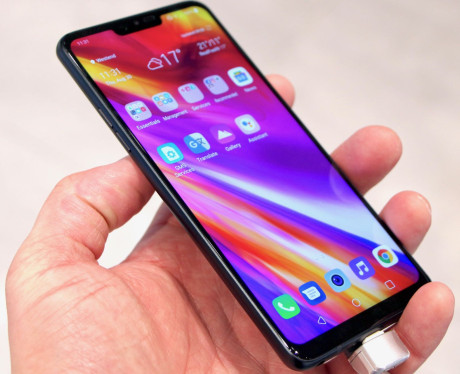
LG recently rolled out two new entries in its G7 range. The G7 Fit and G7 One have the same basic appearance as the flagship G7, but aren't quite the same when it comes to the in-hand experience. Here are our first impressions of these two mid-range phones from LG.
LG G7 Fit and G7 One
LG is banking on the appeal of its G7 ThinQ flagship phone to help it sell a pair of mid-rangers. The company recently showed off the G7 One and the G7 Fit. Both phones have the same basic size and shape as the G7 ThinQ, yet they are nothing like the pricier phone at all. The G7 ThinQ is all glass and all class.
The G7 One very much looks and behaves like a mid-market device. It trades the metal-and-glass approach of the G7 ThinQ for a matte polycarbonate that's easier to hold. The frame and rear panel are plastic, with curved 2.5D glass on front. I like the matte finish and the blue color that's available. It's a tougher phone than the ThinQ for sure.
The G7 Fit has a plastic frame as well, but goes with a glossy panel on the back. This plastic mimics glass with its reflective coating and speckled accents. This phone looks more like the ThinQ, but the plastic means it is lighter and less costly. The 2.5D glass on front tucks itself into the frame perfectly.
Both phones are tall and narrow phone thanks to the screen's size and shape. I'd call them relatively thin. I didn't have any trouble holding or using them. The One and the Fit should fit into pockets easily. Some people may find them a smidge too much phone.
The quality of the assembly is good. The seams are all tight and nothing looked amiss on the samples available in Berlin. Both phones are rated IP68 for protection from water and dust, and mil-spec 810G certification for protection from your butter hands.
The One and the Fit share the same display. It's a 6.1-inch LCD panel with quad HD+ resolution (3,120 by 1,440). It's notched, just like that of the ThinQ. I will say the screen is impressive. We don't know the price points of these phones yet, but any mid-range phone with a display this good is something to consider.
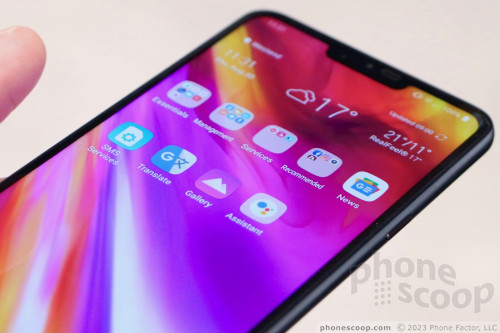
There are buttons all over the place. Like the ThinQ, the One and Fit have a volume keys and the screen lock key on the left edge. These buttons are smallish, but they offer good travel and feedback. On the right edge you'll encounter the dedicated Google Assistant key. A quick press launches Google Assistant so you can pose voice-based queries. It launched Assistant quickly. The button is easy to reach and has good travel and feedback.
The bottom edge hosts the 3.5mm headphone jack, the USB-C port, and hole for the speakerphone.
The rear panels are slightly different.
As noted, the G7 One has a matte finish to it. The camera module, which includes the LED flash, appears in an oval near the top of the phone with the fingerprint reader beneath it. The module sticks out just a little bit.
The G7 Fit's glossy rear panel accommodates a round camera module and separate LED flash are positioned above the fingerprint reader. The difference is slight, but noticeable.
Other shared features between the two phones include 3,000mAh batteries with QuickCharge 3.0, LTE 4G, WiFi, NFC, and Bluetooth, face recognition, and FM radios. On the audio front, the G7 One and G7 Fit offer LG's 32-bit quad DAC with 3D X surround sound, and LG's boombox stereo speakers.
The G7 One relies on Android One, which is based on 8.1 Oreo. The platform ships with only the most essential apps. The G7 One forgoes bloatware in order to keep performance smooth. The phone packs a Snapdragon 835 processor with 4 GB of RAM and 32 GB of storage. The main camera has a 16-megapixel sensor with a standard 71-degree field of view at f/1.6. The selfie camera has an 8-megapixel sensor with a wide(r) 80-degree field of view at f/1.9. It is assisted by LG's AI Cam software.
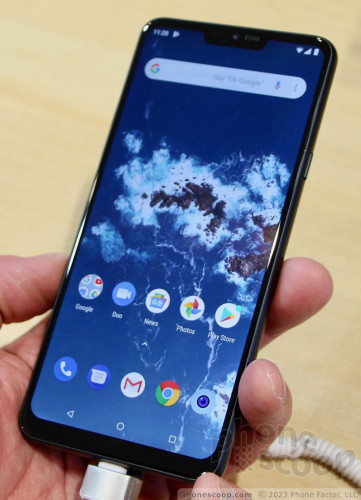
The G7 Fit runs the standard version of Android Oreo, which means it has more apps and LG bloatware. It is powered by a Snapdragon 821 processor and comes with 4 GB of RAM and either 32 or 64 GB of storage. The main camera has a 16-megapixel sensor with a standard 76-degree field of view at f/2.2. The selfie camera has an 8-megapixel sensor with a wide(r) 80-degree field of view at f/1.9. It has LG's AI Cam software aboard as well as Google Lens.
There's no word yet from LG concerning the availability or price of these phones. It's unclear if LG intends to sell them in the U.S., even if made available via unlocked channels.
Comments
No messages


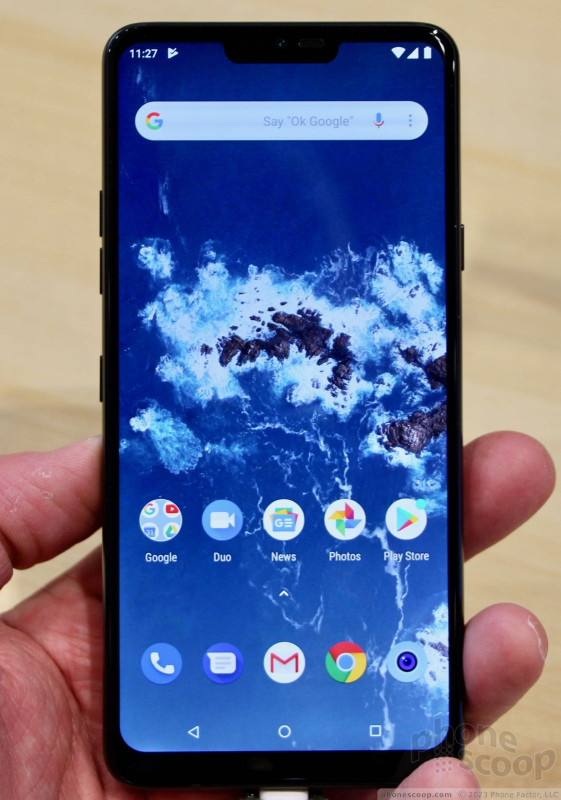










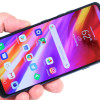 Review: LG G7 ThinQ
Review: LG G7 ThinQ
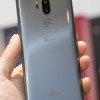 Hands On with the LG G7 ThinQ
Hands On with the LG G7 ThinQ
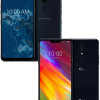 LG Adds Two More Affordable Devices to the G7 Series
LG Adds Two More Affordable Devices to the G7 Series
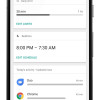 Project Fi Gains Support for Kids Under Age 13 via Family Link
Project Fi Gains Support for Kids Under Age 13 via Family Link
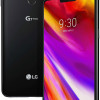 LG G7 ThinQ Goes On Sale Today for $749
LG G7 ThinQ Goes On Sale Today for $749
 LG G7 ThinQ
LG G7 ThinQ


